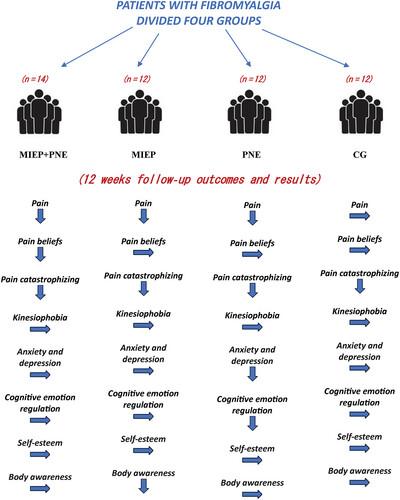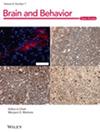This study is a randomized controlled, biopsychosocial study investigating the effectiveness of pain neuroscience education (PNE) and motor imagery-based exercise protocol (MIEP) on fibromyalgia pain.
Our study has four groups (MIEP n = 12, PNE n = 12, MIEP + PNE n = 14, Control n = 12) and all participants (n = 50) consist of patients diagnosed with fibromyalgia with chronic back pain. The primary outcome measure was pain intensity, and secondary outcome measures were beliefs, kinesiophobia, anxiety–depression, cognitive–mood, self-esteem, and body awareness.
A statistically significant decrease in pain intensity was observed in all experimental groups, without any group being superior (Visual Analog Scale [VAS]: MIEP + PNE p = .003, 95% confidence interval [CI], −4.7078 to −0.9922; MIEP p = .003, 95% CI, −5.4806 to −1.0194; PNE p = .002, 95% CI, −3.6139 to −1.5461). There was a significant improvement in organic beliefs in both groups where PNE was applied (MIEP + PNE: p = .017, 95% CI, −7.8211 to −0.3189; PNE: p = .003, 95% CI, −9.7999 to −0.0401). A significant superiority in organic pain beliefs was detected in the MIEP + PNE group compared to the control group (p = .008, 95% CI, 1.7241–9.4959).
According to this study, in which MIEP and PNE were combined, there was a decrease in pain intensity when both applications were applied together and when they were applied one by one. MIEP has improved her motor imagery ability, improved pain and increased body awareness. PNE has improved people's organic pain beliefs; removed people from fears, catastrophizing, and negative thoughts about pain; improved easier management of psychological processes and cognitive–emotion regulation ability.




